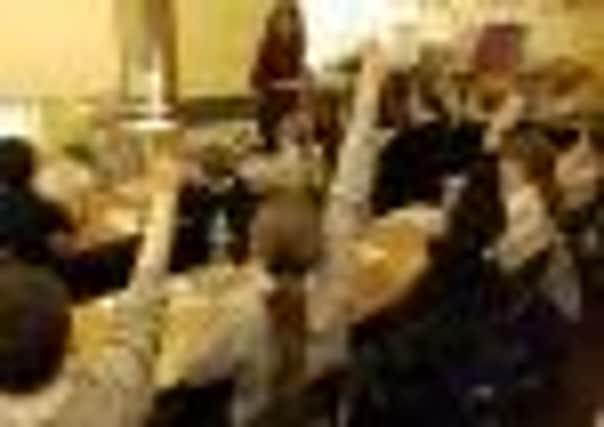New rules will cut primary class sizes, signals minister


Figures released yesterday by the Scottish Government showed the number of P1 children being taught in classes of more than 25 has continued to fall since legislation was introduced in November 2010.
Education secretary Mike Russell said he was considering extending the legislation to P2 and P3 after the statistics showed only 503 P1 pupils,
Advertisement
Hide AdAdvertisement
Hide Ad0.9 per cent of the total, were taught in a class of 26 or more across Scotland in 2012.
However, the figures showed a continuing failure by the government to meet a pledge in the SNP’s 2007 election manifesto – to cut class sizes in P1, P2 and P3 to 18 pupils or fewer.
The number of pupils in P1-P3 being taught in such a class dropped from 20.2 per cent in 2011 to 18.8 per cent this year, while the average class size for pupils in the first three years of primary increased marginally from 22.5 in 2011 to 22.6 in 2012.
Teacher numbers have dropped by more than 3,000 since the SNP came to power in 2007, leading to a worsening pupil/teacher ratio in both primary and secondary schools.
Mr Russell said legislation introduced in 2010 to limit P1 classes to 25 pupils could now be extended to P2 and P3. The policy replaced the earlier, more ambitious pledge to reduce all P1-P3 classes to 18 or fewer.
Mr Russell said: “What we see from these figures is the success of a policy of legislating. That’s something I did after a great deal of thought and there was thought about it by my predecessor – whether we should make it a compulsion, and I think it shows it does work.
“The 503 figure is very interesting. That’s the total number of P1 pupils in classes of more than 25 – that’s something like 19 classes. We’re talking about a dramatic reduction. I think we need to ask what we do next, whether we should now consider P2 and P3, and that’s what I’m going to start to think about and take forward.
“I think 25 is achievable; we have shown it is achievable. Eighteen was much more difficult to achieve. I would like to make continued progress. How do I do so? Well, I think probably the next most likely step will be to ensure we can do
25 in other parts of the primary system.”
Advertisement
Hide AdAdvertisement
Hide AdThe focus on class sizes comes despite the McCormac review of teacher employment, published last year, which said the Scottish Government should ditch attempts to bring about “marginal” changes in pupil numbers and focus instead of raising teaching standards.
But Larry Flanagan, general secretary of the Educational Institute of Scotland, said any move to legislate for class sizes in P2 and P3 would be welcome.
The union leader said: “We certainly would welcome it. It’s something which would … help give kids that solid grounding.
“We initially campaigned for a maximum of 20 pupils in a class, but 25 would certainly be an improvement on potentially 30 kids. It allows for more individual attention for pupils who might need that extra help.”
But Eileen Prior, executive director of the Scottish Parent Teacher Council, said pressure to reduce class sizes often led to “composite classes”, where pupils from different years are taught alongside one another.
“The challenge is that while this comes from central government, they don’t have the power to deliver because education is a local authority service,” she said.
“It also means you’re more likely to get composite classes, with part of one year going in with another. That’s something parents aren’t keen on.”
The statistics also showed that one in four pre-school children does not have access to a qualified teacher, with 10 per cent of those who do receiving only “ad hoc” support.
Advertisement
Hide AdAdvertisement
Hide AdThe EIS is attempting to use the courts to prevent Glasgow City Council appointing non-teachers to run nursery schools.
Commenting on the statistics, Liberal Democrat education spokesman Liam McArthur said: “These figures read like a list of broken promises. In five years the SNP has failed to deliver its pledge to reduce average class sizes for P1-3 pupils to 18, with the average class size returning to 2007 levels at 22.6 pupils.
“Parents don’t want grandiose pledges. They want a fair commitment to their child’s education. Mike Russell’s record on education is losing marks by the day.”
Tory education spokeswoman Liz Smith said: “The SNP came in with a bold promise to reduce class sizes in all P1 to P3 year groups, yet … they are moving in the opposite direction.
“The Scottish Government needs to explain why its key election pledges are so far removed from the reality of our classrooms.”